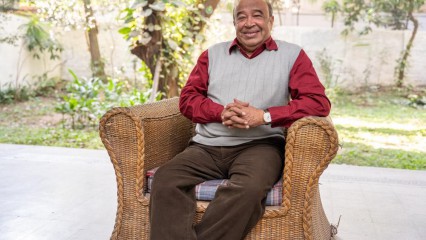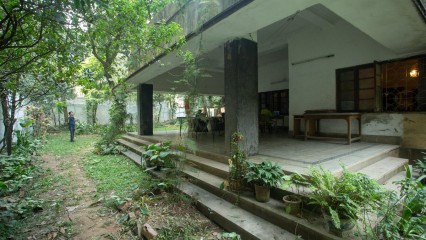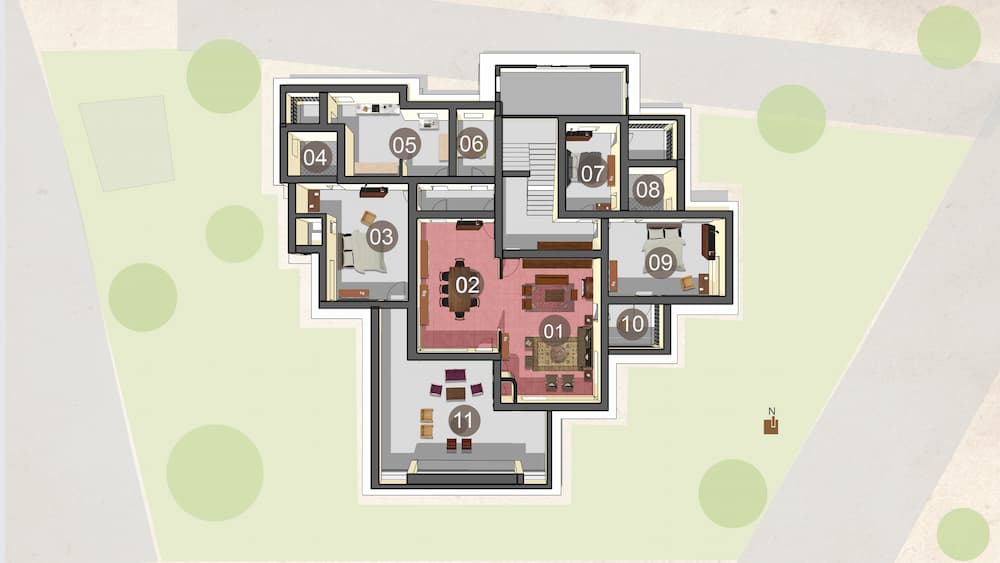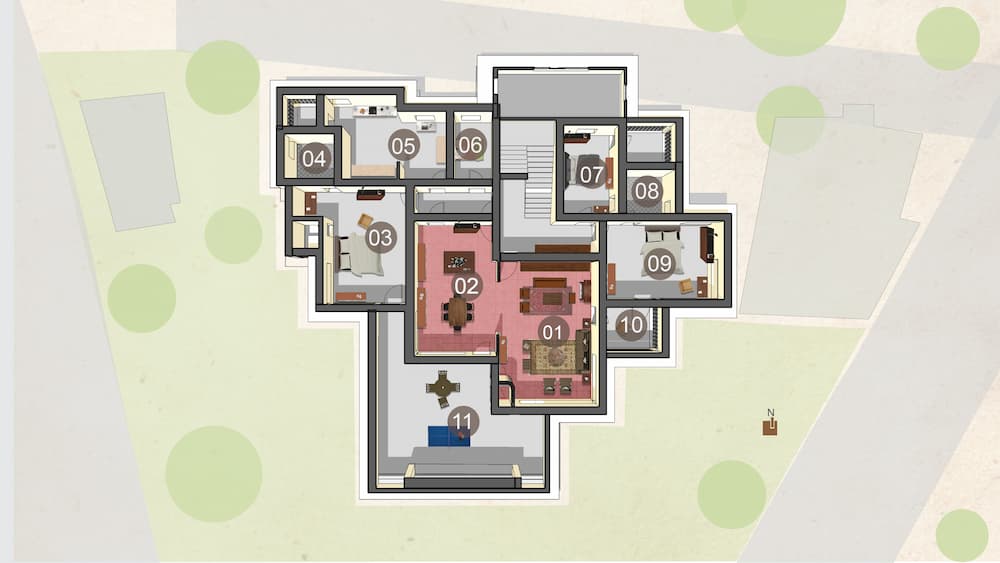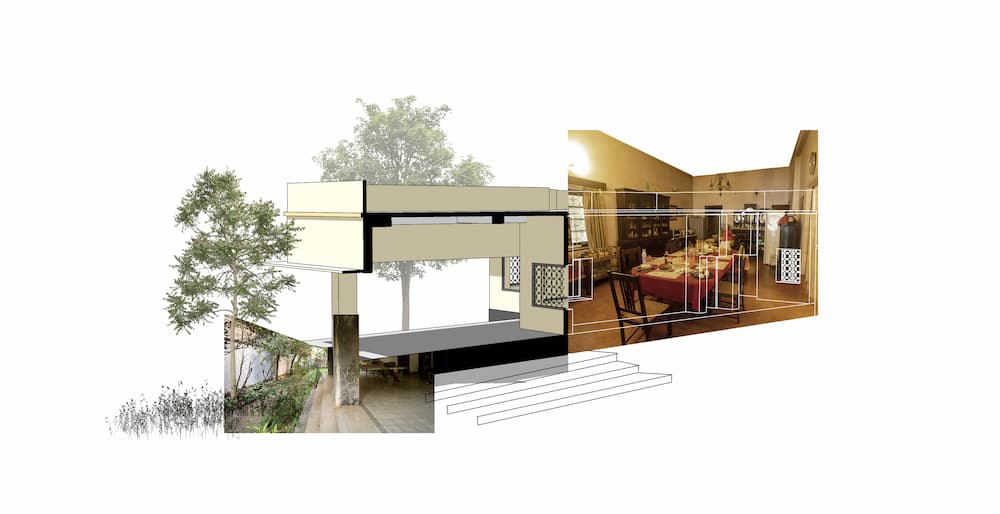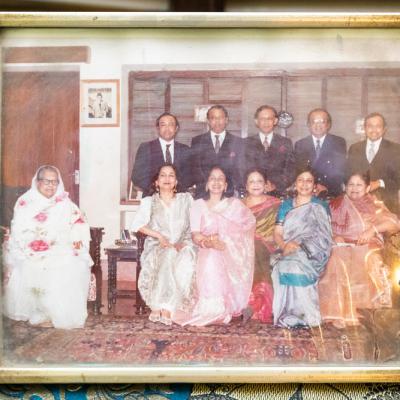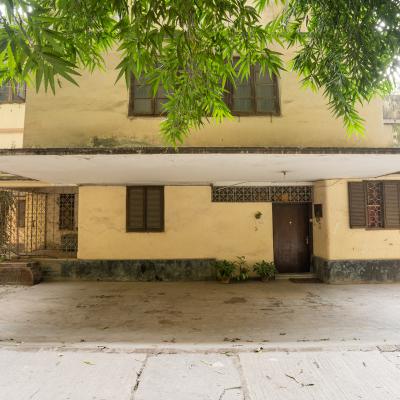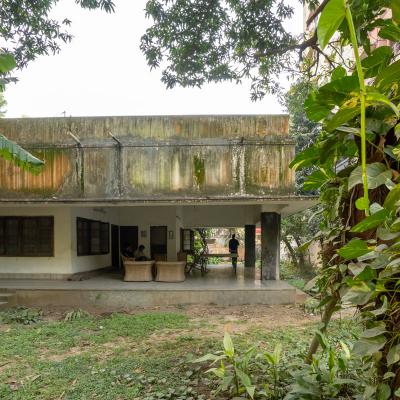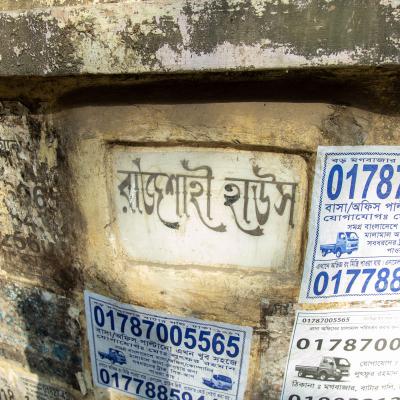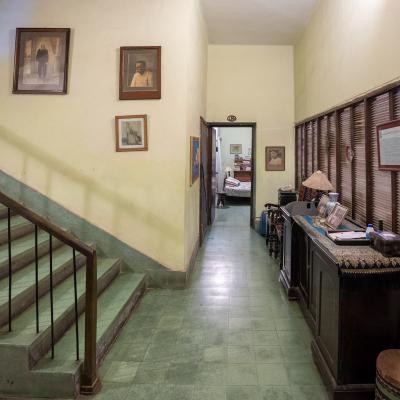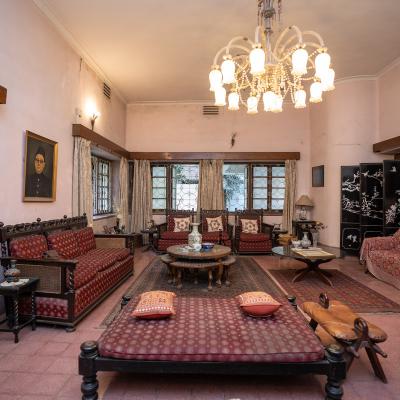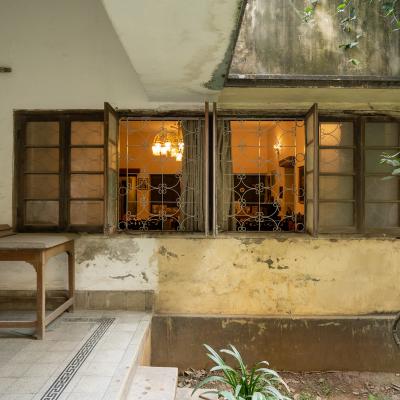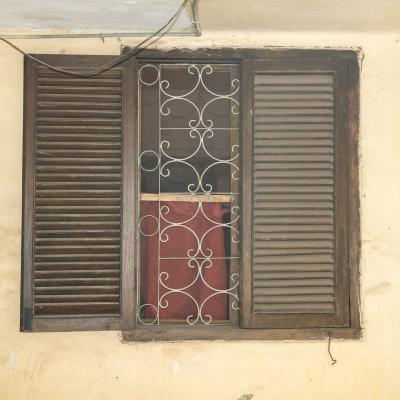1957
Mogbazar
Rajshahi House
The house is expressive of a modern language adapted to the tropical climate and requirements of Dhaka. Typical of houses for the upper middle class who were serving a new government in the 1950s and have started to live in newer parts of Dhaka, the house represents the beginning of a new residential type and lifestyle. Today, the building is a quiet hidden residence in the midst of overwhelming high rise buildings. The Rajshahi House is distinctive for its openness and connection to the surrounding landscape. Designed by Arjun Roy, an architect from Calcutta, the house was built in 1957 for the family of Murtaza Reza Chowdhury, a well-known political personality who was a member of the Bengal and Pakistan Assembly and state minister in the central government of Pakistan.
Share with others
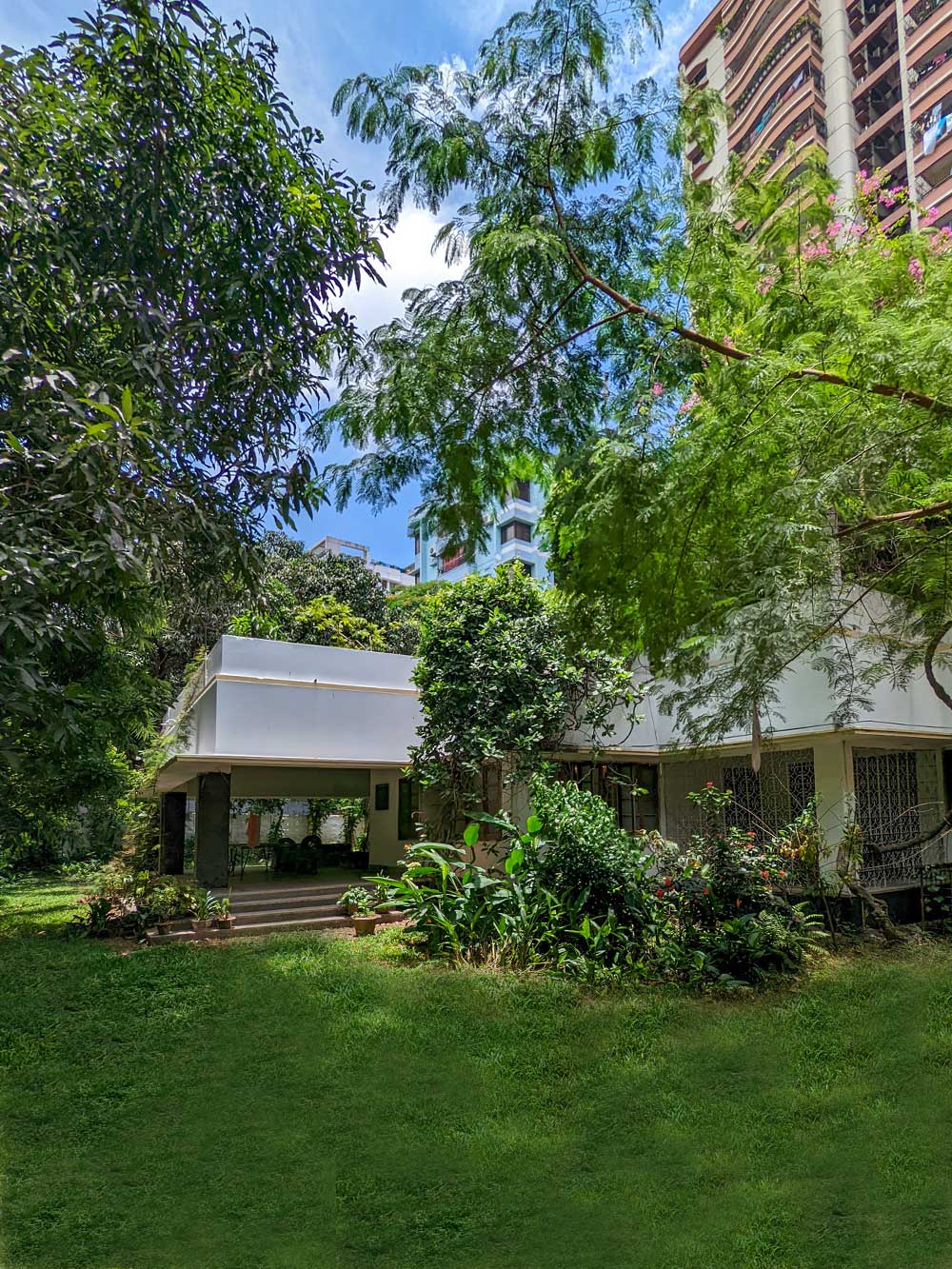
About Rajshahi House
The modest one-storeyed house, located in Moghbazar, exemplifies the vocabulary of modern architecture of postcolonial Dhaka, that was adapted to fit the city’s tropical climate and local context. As seen in typical houses for the upper middle class who were serving a new government in the 1950s and had started to live in newer parts of Dhaka, Rajshahi house represents the beginning of a new residential type and lifestyle.
Many such houses were designed by engineers of that time working on the ‘clean’ language of modern architecture that was being adopted in the 1950s. This particular house was designed by an architect thus making it distinctive for the period it was built. A cantilever form suspended over the entrance of the house is definitely the most striking feature of the house, built in a way that was unique at that time. The pure geometric forms with no ornamental elements is a great reminder of the design style adopted by architects influenced by the modern movement of the 1920s in the West.
Exhibiting the asymmetrical space organization of modernist architecture, the architect was also attentive to the tropical milieu which is expressed in a big porch facing the south. The big porch is the most distinctive element of the house. The movement from the porch to the rooms establishes an intimate relationship between the indoors and the outdoors. A generous lawn existed on the south side which was lost after the subdivision of the original property.
Exploring the house
A heritage building need not be a monument or landmark building; it can be representative of an epoch or period in the history of the city in many ways. Through this project, we have captured various perspectives in the form of virtual tours, timelines, stories, photographs, architectural features and locations.
Use the buttons belows to navigate through this page.
Virtual tour
The virtual tour is a simulation of an existing location, composed of a sequence of still images. It gives a 360 view of the location and one can easily enjoy an immersive experience of the spaces sitting from anywhere in the world. In this case, this tour is enriched with all the relevant information, it also consists of old photo gallery, audio and video clips and various stories of the house.
The following icons has been used in the virtual tour to easily navigate and view details information, large images, photo gallery and videos. Click and hold and move the mouse or tap on the tour and drag in any direction to rotate the default view. You can also zoom in and zoom out the tour.
 |
Virtual tour control panel |
| Move to Previous node | |
| Move to Previous node | |
| Play/ pause Auto rotate | |
| Show/ hide information | |
| Show/ hide tour thumbs | |
| Play/ pause Audio | |
| Show large image | |
| Show image gallery | |
| Play video | |
| Next-Previous button on the tour |
Timeline
Residential buildings in cities have been an essential component of the city providing it with an architectural fabric, lifestyle practices and domestic order. However, with social and economic changes, many of the buildings are being replaced by new types, or often altered for insensitive transformations. This timeline shows the glimpse of many changes, many events this house or this neighborhood has witnessed with time.
Stories about Rajshahi House
All the houses represent a historic social significance of their time, as well as the personal stories of the resident family. As the stories unfold with important events surrounding the house or small details of how a certain space was used, or a furniture and object held dear, it becomes evident how some of these intangible aspects of the history of the house make them a distinctive heritage.
Architectural features
The house follows the pattern of having a bungalow type house with front lawn like many other upper middle class families in Dhaka. Infact, initially the northern side of the house was an orchard with large trees and some staff quarters. Around early 1980s, after property division, the orchard area turned into a multistoried apartment by its owner.
Use of the ground floor in 1958
Legend: 1.Living Room, 2.Dining Area, 3.Bedroom, 4.Toilet, 5.Kitchen, 6.Servant’s Bedroom, 7.Bedroom, 8.Toilet, 9.Bedroom, 10.Veranda, 11.Verandah
Use of the ground floor in 2022
Legend: 1.Living Room, 2.Dining Area, 3.Bedroom, 4.Toilet, 5.Kitchen, 6.Servant’s Bedroom, 7.Bedroom, 8.Toilet, 9.Bedroom, 10.Veranda, 11.Verandah
The big verandah once facing a beautiful lawn was the heart of the house. It connected to the rooms of the house at one end and the surrounding lawn and greenery at the other end. The veranda was also a space for quiet moments as well as social gatherings of the family.
Photo gallery
Architectural photography and 360° photography has been a major method of documentation for this project. The gallery is categorized into few groups for the convenience of the user to see and understand the various aspects of the houses.
Location
The idea is to select exemplary representatives of distintinctive epochs or cultures in the history of Dhaka. Five distinctive houses from five different areas have been selected from the greater Dhaka Metropolitan area for this phase of the project.
Exploring the house
A heritage building need not be a monument or landmark building; it can be representative of an epoch or period in the history of the city in many ways. Through this project, we have captured various perspectives in the form of virtual tours, timelines, stories, photographs, architectural features and locations.
Use the buttons belows to navigate to the details pages.

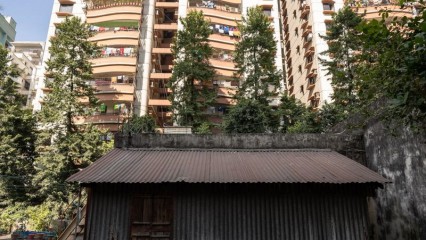
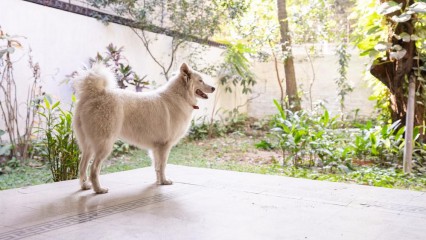
_thumbnail.jpg)
_thumbnail.jpg)
